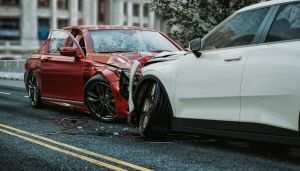- Free Consultation: (630) 527-4177 Tap Here to Call Us
The Importance of Child Safety Seats: Protecting the Littlest Passengers in Car Accidents

Child safety seats are one of the most critical safety measures parents and caregivers can take to protect young passengers on the road. The importance of these seats cannot be overstated, especially when considering the statistics on car accidents involving children. In Illinois, where traffic can be heavy and accidents frequent, ensuring that children are properly restrained in age-appropriate seats is not just a legal requirement but a moral imperative. This blog will explore the importance of child safety seats, the laws in Illinois regarding their use, and the alarming statistics that underscore their necessity.
Why Child Safety Seats Are Essential in Car Accidents
The primary function of a child safety seat is to reduce the risk of injury or death in the event of a car crash. According to the National Highway Traffic Safety Administration (NHTSA), car crashes are a leading cause of death for children ages 1 to 13 in the United States. Proper use of child safety seats can significantly reduce the risk of fatal injury by 71% for infants and 54% for toddlers in passenger cars.
Children are more vulnerable to injury in car crashes because their bodies are still developing. Their bones are more flexible, and their heads are disproportionately large compared to their bodies, making them more susceptible to head and neck injuries. Child safety seats are specifically designed to protect these delicate areas by distributing crash forces across the strongest parts of a child’s body.

Illinois Child Safety Seat Laws
In Illinois, the law is clear on the use of child safety seats. The Illinois Child Passenger Protection Act mandates that all children under the age of 8 must be secured in an appropriate child safety seat. This includes rear-facing seats for infants (until the age of 2) and convertible or forward-facing seats for toddlers. Once a child outgrows their forward-facing seat, they must transition to a booster seat until they are at least 8 years old and can properly fit in a standard seat belt.
Failure to comply with these laws can result in fines and, more importantly, put a child’s life at risk. Illinois law enforcement agencies are vigilant in enforcing these regulations, especially during national campaigns such as “Click It or Ticket.” However, despite these efforts, a significant number of children are still not properly restrained.
The Alarming Statistics of Accidents Involving Children
The statistics surrounding child safety seat usage are sobering. According to the Centers for Disease Control and Prevention (CDC), in 2021, 711 child passengers aged 12 and under died in motor vehicle crashes in the United States. In 2020, more than 63,000 children were injured in car crashes. Of the children who died in 2021, 30% of children aged 0-3 were not buckled up, and 36% of children 8-12 were not buckled up. These numbers highlight a significant gap in the proper use of child safety seats.
In Illinois, the statistics are similarly concerning. The Illinois Department of Transportation (IDOT) reported that in 2021, 22 children under the age of 8 were killed in car crashes. Of these fatalities, nearly half were not properly restrained. These tragedies are a stark reminder of the importance of child safety seats and the need for continuous public education on their proper use.
Choosing the Right Child Safety Seat
Selecting the right child safety seat can be overwhelming for parents and caregivers, but it is crucial to ensure maximum protection. The NHTSA provides a wealth of information on choosing the appropriate seat based on a child’s age, weight, and height. Generally, children should remain in a rear-facing seat for as long as possible, as this position offers the best protection for their head, neck, and spine in a crash.
Once a child outgrows their rear-facing seat, they should transition to a forward-facing seat with a harness. The harness should be snug and positioned correctly across the child’s shoulders and chest. When a child outgrows their forward-facing seat, they should move to a booster seat that allows the vehicle’s seat belt to fit properly across their lap and shoulder.
Proper Installation and Usage of Child Car Seats
Even the best child safety seat will not protect a child if it is not installed or used correctly. The NHTSA estimates that nearly half of all car seats are misused in a way that could reduce their effectiveness in a crash. Common mistakes include incorrect installation, using the wrong seat for a child’s size, and failing to secure the child properly in the seat.
To address this issue, Illinois offers numerous resources for parents and caregivers. Many local police and fire departments provide free car seat inspections and installation assistance. These services ensure that child safety seats are installed correctly and that parents understand how to use them properly.
The importance of child safety seats cannot be overstated. These seats save lives and reduce the risk of serious injury in the event of a car crash. In Illinois, adherence to child safety seat laws is essential not only for legal compliance but for the protection of our most vulnerable passengers. By choosing the right seat, installing it correctly, and using it consistently, parents and caregivers can ensure that their children are as safe as possible on the road.
The statistics are clear: proper use of child safety seats dramatically reduces the risk of injury and death for young children. In a state like Illinois, where traffic accidents are a daily reality, taking the time to secure children in appropriate safety seats is one of the most important steps a parent can take.
Contact the Illinois Car Accident Attorneys at John J. Malm & Associates
The injuries children can sustain in a car accident can be serious, even if they are in a proper car seat. If you or your loved one has been injured in a car accident, contact the Naperville car accident attorneys at John J. Malm & Associates.















